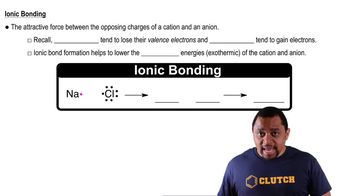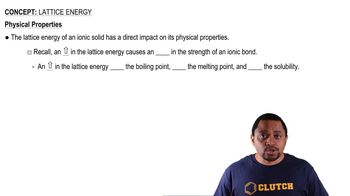Here are the essential concepts you must grasp in order to answer the question correctly.
Ionic Bonding
Ionic bonding occurs when electrons are transferred from one atom to another, resulting in the formation of charged ions. These oppositely charged ions attract each other, creating a strong electrostatic force that holds them together. The strength of an ionic bond is influenced by the charges of the ions and the distance between them.
Recommended video:
Bond Enthalpy
Bond enthalpy, or bond dissociation energy, is the amount of energy required to break a bond in a molecule. It is a measure of bond strength; higher bond enthalpy indicates a stronger bond. For ionic compounds, bond enthalpy can be influenced by the size and charge of the ions involved, with smaller ions and higher charges typically leading to stronger bonds.
Recommended video:
Lattice Energy
Lattice energy is the energy released when gaseous ions combine to form an ionic solid. It is a crucial factor in determining the stability and strength of ionic compounds. Lattice energy increases with the charge of the ions and decreases with increasing ionic radius, making it essential for comparing the strength of different ionic bonds, such as Na—Cl and Ca—O.
Recommended video:
 Verified step by step guidance
Verified step by step guidance

